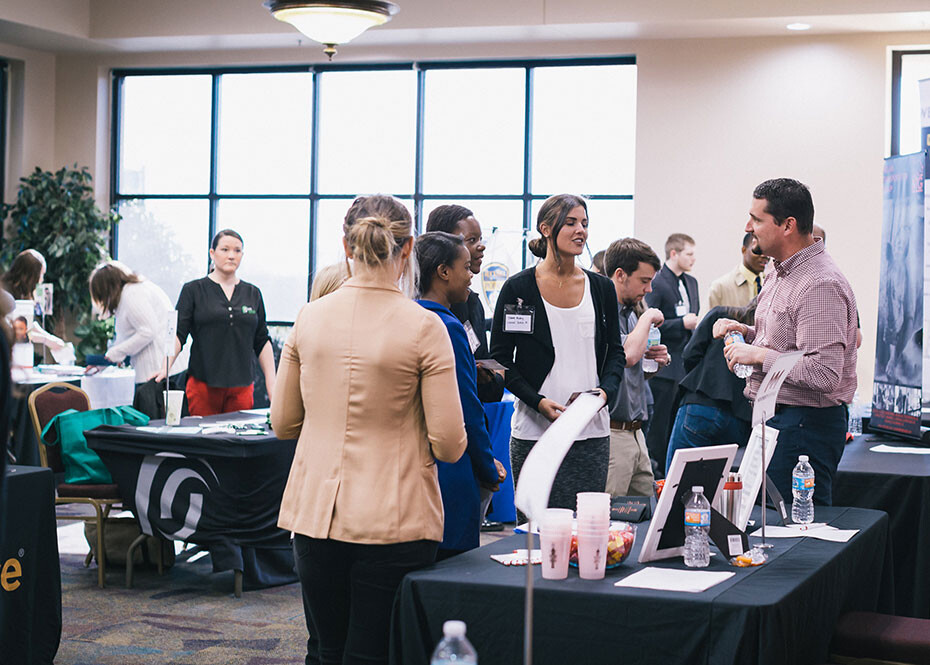How Social Capital Can Improve Job Opportunities
Focusing on social capital’s impact on job acquisition may reshape the current way nonprofits and local governments approach employment assistance. By refocusing the problem not just on how to connect job seekers and potential employers, organizations can instead look to build relationships that will open doors for employment today and in the future.

THE CHALLENGE
The impacts of COVID-19 on the United States continue to be felt in how we interact with people, spend leisure time, and participate (or not) in the workforce. One immediate impact of COVID-19 was felt by many in the form of job loss. Between the months of February and April 2020, 22 million jobs were lost in the United States, with the greatest impact on lower-income earners. Those especially likely to face unemployment because of COVID-19 were single parents, younger people, those with lower levels of education, and those in part-time positions.
While many people who lost their jobs due to the pandemic were able to return to work after initial layoffs, not all workers were as fortunate. An investigation by the Pew Research Center found that lower-income adults who were laid off due to COVID-19 were less likely to be working one year later compared to middle- and upper-income adults. Low-wage earners were more likely to have to find new employment, rather than return to a previous position. This put an undue burden on low-income earners to find jobs while they were unemployed and had less access to typical resources.
THE SOLUTION
Social capital – the connections, networks, or relationships among individuals and the norms of reciprocity and trustworthiness that arise from them – is critical for connecting people with job opportunities. There are three types of social capital – bonding, bridging, and linking. Bonding social capital is the close relationships that people hold with those most like themselves, while bridging social capital is the relationships we hold with a diverse group. People with more social capital, both bonding and bridging, have better and higher paying jobs. One type of social capital, social capital is especially essential for better and higher paying jobs. This is because bridging social capital is necessary for job seekers to find out about a variety of job openings and opportunities from a more diverse network. Bridging social capital is correlated with job-seekers finding out about new work opportunities. This is because bonding social capital relationships are with people most like themselves, who are more likely to only know of the same opportunities.
Scholars have shown that demographics matter in the labor market and with hiring practices. Specifically, white men have historically had greater access to job opportunities and have influenced the outcome of the hiring practices by showing preference for individuals similar to themselves. Without bridging social capital with white males who have knowledge of these opportunities, job seekers outside their circles may not be able to access better employment positions. This is why social capital – the networks, as well as organizations that provide connections between the different power dynamics – needs to be included as a key component for supporting job seekers and expanding their opportunities for job placement. Bridging social capital and linking social capital provide the types of relationships necessary for low-wage workers to have access to information on opportunities for higher-wage employment.
Relationships matter for job recruitments and placements. Job recruitment has been shown to be the result of the interpersonal networks between people. This is because interpersonal relationships lead to knowledge of jobs, support from current employees, and a sense of connection. These relationships lead to recruiting efforts that focus on those who are connected in some way rather than an unknown individual.
THE PLAYERS
Nonprofits and local governments are the ideal organizations to provide opportunities to best assist unemployed or underemployed people after the pandemic because of their familiarity with resources, access to social capital, and established resources within the communities. Organizations that attempt to help individuals find employment can benefit job seekers by focusing efforts on how to build and leverage social capital. Opportunities to promote the bridging type of social capital can occur through individual efforts by non-profits or by collaborative efforts between local or state governments to host social and networking events.
Employment-focused entities may be motivated to participate in networking events because of the opportunity to recruit, interview, and employee efficiently. Organizations can use their own social capital to invite potential employers to an event. By using their own relationships with employers, they are fostering relationships that may result in a job immediately, or present opportunities for the future.
THE PROMISE
Focusing on social capital’s impact on job acquisition may reshape the current way nonprofits and local governments approach employment assistance. By refocusing the problem not just on how to connect job seekers and potential employers, organizations can instead look to build relationships that will open doors for employment today and in the future. A statewide approach to social capital building may also foster social capital amongst independent organizations, further increasing collaboration and efficiency within communities. While individuals hold social capital, organizations do too. Organizational social capital can be used to share future opportunities, recognize areas for partnerships, and leverage personal connections on a broad scale.



